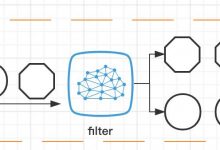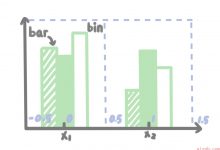项目开发中,如果有定时任务的业务要求,我们会使用linux的crontab来解决,但是它的最小粒度是分钟级别,如果要求粒度是秒级别的,甚至毫秒级别的,crontab就无法满足,值得庆幸的是swoole提供的强大的毫秒定时器。
应用场景举例
我们可能会遇到这样的场景:
场景一:每隔30秒获取一次本机内存使用率
场景二:2分钟后执行报表发送任务
场景三:每天凌晨2点钟定时请求第三方接口,如果接口有数据返回则停止任务,如果接口由于某种原因没有响应或者没有数据返回则5分钟后继续尝试请求该接口,尝试5次后仍然失败则停止该任务
以上的三个场景我们都可以归纳为定时任务的范畴。
Swoole毫秒定时器
Swoole提供了异步毫秒定时器函数:
swoole_timer_tick(int $msec, callable $callback):设置一个间隔时钟定时器,每隔$msec毫秒执行一次$callback,类似于javascript中的setInterval()。
swoole_timer_after(int $after_time_ms, mixed $callback_function):在指定的时间$after_time_ms后执行$callback_function,类似于javascript的setTimeout()。
swoole_timer_clear(int $timer_id):删除指定id的定时器,类似于javascript的clearInterval()。
解决方案
对于场景一,经常用在系统检测统计方面,实时性要求比较高,但又能控制好频率,多用于后台服务器性能监控,可以生成可视化图表。可以是30秒获取一次内存使用率,也可以是10秒,而crontab最小粒度只能设置为1分钟。
swoole_timer_tick(30000, function($timer) use ($task_id) { // 启用定时器,每30秒执行一次$memPercent = $this->getMemoryUsage(); //计算内存使用率echo date(\'Y-m-d H:i:s\') . \'当前内存使用率:\'.$memPercent.\"\\n\";});
对于场景二,直接定义xx时间后执行某项任务的话,貌似crontab比较困难,而使用swoole的swoole_timer_after可以实现:
swoole_timer_after(120000, function() use ($str) { //2分钟后执行$this->sendReport(); //发送报表echo \"send report, $str\\n\";});
对于场景三,用来作尝试请求,请求失败后继续,如果成功则停止请求。用crontab也能解决,但是比较傻,比如设置每隔5分钟请求一次,不管成功会失败都会去执行一次。而用swoole定时器则智能多了。
swoole_timer_tick(5*60*1000, function($timer) use ($url) { // 启用定时器,每5分钟执行一次$rs = $this->postUrl($url);if ($rs) {//业务代码...swoole_timer_clear($timer); // 停止定时器echo date(\'Y-m-d H:i:s\'). \"请求接口任务执行成功\\n\";} else {echo date(\'Y-m-d H:i:s\'). \"请求接口失败,5分钟后再次尝试\\n\";}});
示例代码
新建文件\\src\\App\\Task.php:
namespace Helloweba\\Swoole;use swoole_server;/*** 任务调度*/class Task{protected $serv;protected $host = \'127.0.0.1\';protected $port = 9506;// 进程名称protected $taskName = \'swooleTask\';// PID路径protected $pidPath = \'/run/swooletask.pid\';// 设置运行时参数protected $options = [\'worker_num\' => 4, //worker进程数,一般设置为CPU数的1-4倍\'daemonize\' => true, //启用守护进程\'log_file\' => \'/data/log/swoole-task.log\', //指定swoole错误日志文件\'log_level\' => 0, //日志级别 范围是0-5,0-DEBUG,1-TRACE,2-INFO,3-NOTICE,4-WARNING,5-ERROR\'dispatch_mode\' => 1, //数据包分发策略,1-轮询模式\'task_worker_num\' => 4, //task进程的数量\'task_ipc_mode\' => 3, //使用消息队列通信,并设置为争抢模式];public function __construct($options = []){date_default_timezone_set(\'PRC\');// 构建Server对象,监听127.0.0.1:9506端口$this->serv = new swoole_server($this->host, $this->port);if (!empty($options)) {$this->options = array_merge($this->options, $options);}$this->serv->set($this->options);// 注册事件$this->serv->on(\'Start\', [$this, \'onStart\']);$this->serv->on(\'Connect\', [$this, \'onConnect\']);$this->serv->on(\'Receive\', [$this, \'onReceive\']);$this->serv->on(\'Task\', [$this, \'onTask\']);$this->serv->on(\'Finish\', [$this, \'onFinish\']);$this->serv->on(\'Close\', [$this, \'onClose\']);}public function start(){// Run worker$this->serv->start();}public function onStart($serv){// 设置进程名cli_set_process_title($this->taskName);//记录进程id,脚本实现自动重启$pid = \"{$serv->master_pid}\\\\n{$serv->manager_pid}\";file_put_contents($this->pidPath, $pid);}//监听连接进入事件public function onConnect($serv, $fd, $from_id){$serv->send( $fd, \"Hello {$fd}!\" );}// 监听数据接收事件public function onReceive(swoole_server $serv, $fd, $from_id, $data){echo \"Get Message From Client {$fd}:{$data}\\n\";//$this->writeLog(\'接收客户端参数:\'.$fd .\'-\'.$data);$res[\'result\'] = \'success\';$serv->send($fd, json_encode($res)); // 同步返回消息给客户端$serv->task($data); // 执行异步任务}/*** @param $serv swoole_server swoole_server对象* @param $task_id int 任务id* @param $from\\id int 投递任务的worker_id* @param $data string 投递的数据*/public function onTask(swoole_server $serv, $task_id, $from_id, $data){swoole_timer_tick(30000, function($timer) use ($task_id) { // 启用定时器,每30秒执行一次$memPercent = $this->getMemoryUsage();echo date(\'Y-m-d H:i:s\') . \'当前内存使用率:\'.$memPercent.\"\\n\";});}/*** @param $serv swoole_server swoole_server对象* @param $task_id int 任务id* @param $data string 任务返回的数据*/public function onFinish(swoole_server $serv, $task_id, $data){//}// 监听连接关闭事件public function onClose($serv, $fd, $from_id) {echo \"Client {$fd} close connection\\n\";}public function stop(){$this->serv->stop();}private function getMemoryUsage(){// MEMORYif (false === ($str = @file(\"/proc/meminfo\"))) return false;$str = implode(\"\", $str);preg_match_all(\"/MemTotal\\s{0,}\\:+\\s{0,}([\\d\\.]+).+?MemFree\\s{0,}\\:+\\s{0,}([\\d\\.]+).+?Cached\\s{0,}\\:+\\s{0,}([\\d\\.]+).+?SwapTotal\\s{0,}\\:+\\s{0,}([\\d\\.]+).+?SwapFree\\s{0,}\\:+\\s{0,}([\\d\\.]+)/s\", $str, $buf);//preg_match_all(\"/Buffers\\s{0,}\\:+\\s{0,}([\\d\\.]+)/s\", $str, $buffers);$memTotal = round($buf[1][0]/1024, 2);$memFree = round($buf[2][0]/1024, 2);$memUsed = $memTotal - $memFree;$memPercent = (floatval($memTotal)!=0) ? round($memUsed/$memTotal*100,2):0;return $memPercent;}}
我们以场景一为例,在onTask启用定时任务,每隔30秒计算一次内存使用率。实际应用中可以把计算好的内存按时间写入数据库等存储中,然后可以根据前端需求用来渲染成统计图表,如:

接着服务端代码 public\\taskServer.php :
<?phprequire dirname(__DIR__) . \'/vendor/autoload.php\';use Helloweba\\Swoole\\Task;$opt = [\'daemonize\' => false];$ser = new Task($opt);$ser->start();
客户端代码 public\\taskClient.php :
<?phpclass Client{private $client;public function __construct() {$this->client = new swoole_client(SWOOLE_SOCK_TCP);}public function connect() {if( !$this->client->connect(\"127.0.0.1\", 9506 , 1) ) {echo \"Error: {$this->client->errMsg}[{$this->client->errCode}]\\n\";}fwrite(STDOUT, \"请输入消息 Please input msg:\");$msg = trim(fgets(STDIN));$this->client->send( $msg );$message = $this->client->recv();echo \"Get Message From Server:{$message}\\n\";}}$client = new Client();$client->connect();
验证效果
1.启动服务端:
php taskServer.php
2.客户端输入:
另开命令行窗口,执行
[root@localhost public]# php taskClient.php
请输入消息 Please input msg:hello
Get Message From Server:{\"result\":\"success\"}[root@localhost public]#
3.服务端返回:

如果返回上图中的结果,则定时任务正常运行,我们会发现每隔30秒会输出一条信息。
总结
到此这篇关于php使用Swoole实现毫秒级定时任务的方法的文章就介绍到这了,更多相关php Swoole实现毫秒级定时任务内容请搜索脚本之家以前的文章或继续浏览下面的相关文章希望大家以后多多支持脚本之家!
您可能感兴趣的文章:
- ThinkPHP5.0框架结合Swoole开发实现WebSocket在线聊天案例详解
- docker搭建php+nginx+swoole+mysql+redis环境的方法
- 在PHP 7下安装Swoole与Yar,Yaf的方法教程
- PHP使用SWOOLE扩展实现定时同步 MySQL 数据
- PHP的swoole扩展安装方法详细教程
- PHP+swoole实现简单多人在线聊天群发
- php安装swoole扩展的方法
- PHP框架Swoole定时器Timer特性分析
- 使用swoole扩展php websocket示例
 爱站程序员基地
爱站程序员基地


